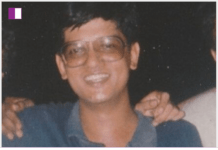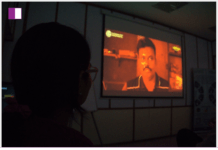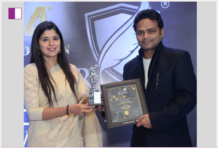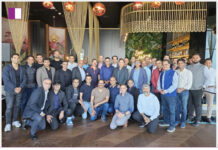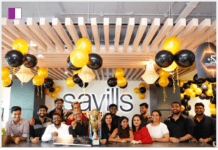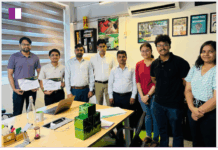Shanmukha Sai Swamy D brings valuable insights into the evolving business landscape, where innovation and strategy triumph over legacy brands. In a recent analysis, he highlights how Mokobara, a Bangalore-based startup, is redefining the Indian luggage market, proving that success is not just about having a groundbreaking idea but about executing the right strategy. The way Mokobara has carved its niche in a market dominated by giants like VIP, Samsonite, and Safari is a case study in smart business practices.
Mokobara’s Journey: Learning from the Past, Building for the Future
Shanmukha Sai Swamy D points out that innovation in luggage is not about reinventing the wheel but adapting it to modern needs. The history of luggage tells us that each generation has had its own requirements. From Louis Vuitton’s luxury trunks in the 19th century to the introduction of wheeled suitcases in the 1970s, the evolution has always been about functionality. Mokobara has simply taken this forward, integrating stylish design with tech-friendly features, such as USB charging ports and durable materials, to cater to today’s young travelers.
This approach, as Shanmukha Sai Swamy D explains, shows that businesses do not always need to create something entirely new. Instead, they can take existing ideas and mold them to fit the present-day consumer’s expectations. By focusing on design and practicality, Mokobara has made itself relevant in an industry that was largely complacent.
What Makes Mokobara Stand Out?
According to Shanmukha Sai Swamy D, Mokobara’s success is built on four fundamental strategies:
Design-Centric Approach:
Soft, sophisticated colors and simple shapes appeal to young professionals and travelers.
Personalized luggage options allow customers to add their initials, making their purchase feel unique.
Smart features, such as USB ports and lightweight yet strong materials, add functional value.
Direct-to-Consumer (D2C) Model:
By cutting out middlemen, Mokobara reduces costs and passes the savings on to consumers.
The company offers a 30-day trial period, building trust with its customers.
Their presence is growing both online and offline, with 20 physical stores and more in the pipeline.
Quality Without Overpricing:
The luggage brand caters to young urban travelers who want premium quality without exorbitant prices.
The ₹10,000-₹20,000 price range, previously overlooked by major brands, is now a thriving niche.
A Unique Shopping Experience:
Mokobara has turned its stores into lifestyle hubs, making shopping a fun and engaging experience.
Large astronaut mascots and aesthetically designed stores create a buzz and encourage social sharing.
Shanmukha Sai Swamy D highlights that Mokobara’s retail strategy is a masterstroke, making the brand aspirational without being unattainable.
Business Lessons from Mokobara’s Strategy
Shanmukha Sai Swamy D believes that Mokobara’s rise offers crucial takeaways for entrepreneurs and business owners across industries. Some of these include:
Look for market gaps, not just trends: Mokobara identified an underserved segment rather than blindly following what competitors were doing.
Design matters: Modern consumers value aesthetics as much as functionality, especially younger demographics.
Strategic collaborations add value: By partnering with IndiGo to provide extra baggage allowance, Mokobara created an added incentive for customers.
Retail is more than just selling products: The brand’s approach to creating an experience rather than just a transaction is what fosters customer loyalty.
A Mindset for Success
Shanmukha Sai Swamy D reiterates that Mokobara’s success is not just about selling luggageit’s about understanding and catering to a new generation of buyers. Today’s consumers seek experiences, personalization, and authenticity over mere brand recognition. Mokobara has blended these elements seamlessly to build not just a customer base but a loyal community.
By analyzing Mokobara’s strategy, Shanmukha Sai Swamy D encourages businesses to rethink their approach. Instead of competing on price alone, brands should focus on differentiation, quality, and customer engagement. Whether it’s luggage, fashion, technology, or services, the key to success lies in understanding evolving consumer behavior and responding innovatively.
What’s Your Mokobara Moment?
Shanmukha Sai Swamy D leaves us with an intriguing question: What is the hidden opportunity in your industry? Just as Mokobara turned something as ordinary as luggage into an aspirational product, there are countless overlooked niches waiting to be tapped.
He urges entrepreneurs to think beyond conventional market wisdom and identify spaces where they can introduce meaningful changes. Whether through design innovation, better customer experiences, or smarter business models, the next Mokobara could emerge from any sector.
Final Thoughts
As Shanmukha Sai Swamy D emphasizes, success in today’s business landscape is not about outspending competitors but outsmarting them. Mokobara’s growth is a testament to the power of understanding your audience, delivering value, and making each interaction with your brand memorable.
For business owners, marketers, and startup founders, this is a call to action. The next game-changing brand isn’t necessarily the one with the biggest budgetit’s the one that sees what others overlook and acts decisively.
Shanmukha Sai Swamy D’s insights remind us that opportunities are everywhere. The question is: Are you looking closely enough to find yours?







